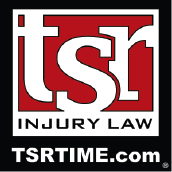Debunking The Top 10 Myths Of Traumatic Brain Injury
 The following article was published in the Minnesota Association for Justice magazine, and Rich has rewritten the article for publication in the Indiana Trial Lawyers Association magazine. Click on the link at the bottom to read the full article.
The following article was published in the Minnesota Association for Justice magazine, and Rich has rewritten the article for publication in the Indiana Trial Lawyers Association magazine. Click on the link at the bottom to read the full article.
Convincing a jury your client experienced a traumatic brain injury can be very challenging. You first must overcome an unrealistic perception that even extreme trauma results in little long-term damage. Movies, wrestling and sports in society all perpetuate myths of invincibility. Athletes, for example, often further perpetuate these myths playing through concussions and fans rarely see any off-the-field symptoms. Although proving the reality of traumatic brain injury is often difficult, proving these injuries are generally easier than proving other nonvisible injuries, such as soft tissue neck and back injuries. Unlike experts in other areas, the neuropsychological experts in traumatic brain injury universally agree on certain fundamental principles and will generally readily admit very helpful points in cross examination. Minnesota’s statutes are also beneficial in helping you prove your client’s injuries.
Effective cross examination of the defense neuropsychologist can be accomplished by directly debunking the myths associated with traumatic brain injury. This article provides you with ammunition for effective cross examination of the neuropsychologist followed by a list of specific questions which can be asked of the neuropsychologist to debunk each myth.



